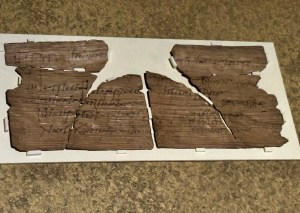3 Great Ways to Research History for Your Book
- Anne Morgan
- Aug 5, 2024
- 4 min read
Updated: Mar 25
Are you working on a historical fiction, something set in the past that could use some research on your part to get a stronger historical feel to the background of the book?
Or maybe you’re like me and working on something non-fiction, with all the entertaining research that involves as you try to discover everything possible about the person, place, or time period you’re exploring.
Either way, you’ll need to do at least some research on what it was like living in your chosen time period. Depending on when you’re researching, here are three great resources you should look into:
Oral history
Not the first thing most people think of, but I was interviewed for two oral history projects recently so it came to me first. One was as an alum of my college- the history students were supposed to interview alumni and ask about what it was like when we were there. Which led me to figure out how long it had been since I graduated. Which made me feel really old. The other was for a museum exhibit on the early days of a museum I helped develop.
Museum exhibits are definitely where most people think of oral history interviews, possibly video interviews as well, though if you think about documentaries like some of Ken Burns’, I’d say those count too. You’re getting people’s memories of specific events or what it was like to live or work doing something in a particular way. They can be a great way of keeping memories alive and sharing them with others. For example, my boss from the museum in CA is now working at Bethel Woods collecting stories from people who went to Woodstock. If you go to the fabulous World War 2 Museum in New Orleans, different exhibits have interviews with soldiers or people on the home front. There are things you’ll only learn from hearing it directly from the source. I was living in New Orleans when that museum (then called the D-Day Museum) opened. On the news the exhibit designers told a story about trying to rebuild one of the Higgins boats and being unable to figure something out. A few veterans who had actually worked on the boats came by and remembered having the same problem and told them the fix that had always worked- but no one had written it down. Only the men working on the boats at the time knew how to do it!
If you’re researching something relatively recent, check museums, archives, and local historical societies to see if they have (or are working on collecting) stories that might help you get more of a feel for your time period.
Diaries and memoirs
We all probably read The Diary of Anne Frank in high school. Maybe that was the first time we were exposed to the idea of reading a diary as a historical document. Today, thanks to digitization and archives, we have access to everything from Samuel Pepy’s diaries to Mary Chestnut’s diaries to get their first hand accounts of what it was like to live through famous events like the Great Fire of London (Pepys) or the Civil War (Chestnut). With the help of the internet we can access the Library of Congress and National Archives Catalogs, read Queen Victoria’s diaries, and more and more people are comfortable publishing family memoirs. If you’ve read Erik Larson’s latest book, The Demon of Unrest, you’ll see he frequently quotes Mary Chestnut’s diaries when he wants to describe what daily life was like in Washington D.C. before the Civil War began. Several butlers and maids at the end of the Edwardian era wrote memoirs of their time in service, including Eric Horne in What the Butler Winked At which I’m using to get a feel for what life in service was like at that time.
Letters
Letters are great when you can find them because you are getting the (potentially) unfiltered thoughts of one person to another. Biographers love including letters from their subject.

When I was in London this spring I got to see some of the Vindolanda tablets, ancient Roman tablets that are often about military matters along Hadrian’s Wall. But the ones I saw were a letter from Claudia Severa to her friend Lepidina inviting her to a birthday party. They remind us that there were women and families in Roman military towns and help us try to imagine what it might have been like living there. Other letters in the exhibit include a son writing to his parents about needing new sandals. The everyday bits of life preserved!
Of course, when we’re doing research like this, we do have to keep a few things in mind. We’re reading one person’s point of view in any of these cases- and depending on when these interviews or diaries were written, the memories may not be correct. They may also have agendas. Are events being remembered correctly or covered up to make the person look better? If the story is being told by a child or grandchild, for example, things may have been ‘cleaned up’ a bit- Queen Victoria’s diaries are a famous case of ‘editing’ before being shared with anyone.
One great resource I’ve found recently is The History Quill, which can recommend a lot of great online resources for authors trying to do historical research through different time periods.
Are you looking for a writing coach or developmental editor? Contact me for a free discovery call and let’s talk about your project!

Kommentare